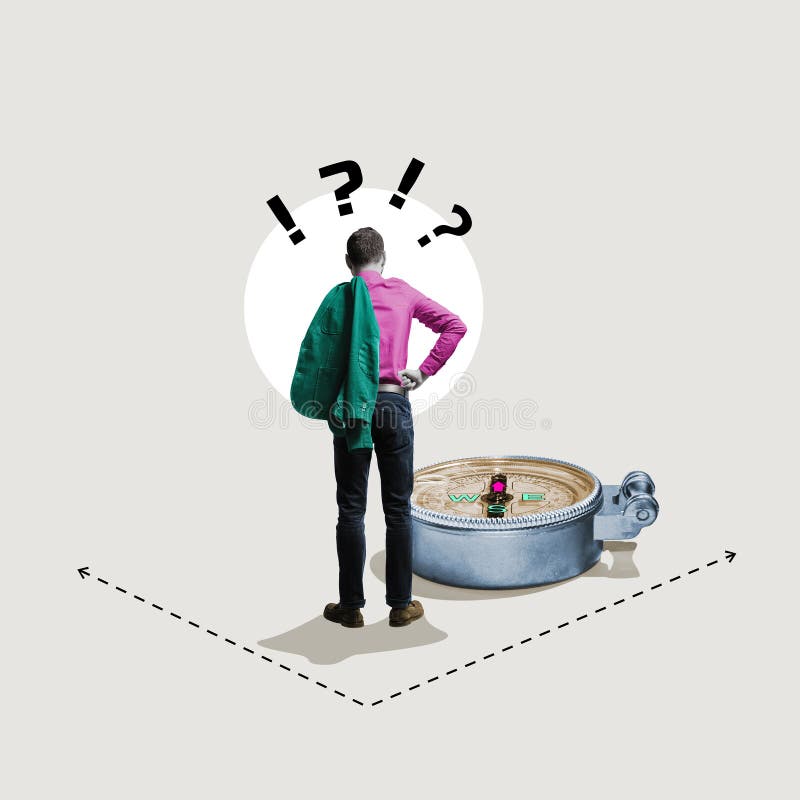Clock Which Direction: Choosing the Right Path Forward
Clocks are everywhere, helping us keep track of time. But have you ever wondered why clocks move in a specific direction?
This curious detail has a deeper story rooted in history and tradition. The clockwise direction isn’t random. It dates back to ancient times when people used sundials to tell time. The shadow on a sundial moved in a particular way, which became the standard for clocks.
Over centuries, this pattern influenced how mechanical clocks were designed. Understanding why clocks move the way they do connects us to the past and highlights how history shapes modern life. In this blog, we’ll explore the origins of the clock’s direction and how it became a global norm. Let’s uncover the story behind this everyday object!
Navigating Life’s Choices
Life is full of choices. Each decision can change your path. Think about what matters to you. Your core beliefs guide you. They are like a compass. Know your personal values. They help you pick the right way.
Risk is part of every choice. Reward is what you hope to get. To make smart choices, weigh both sides. Ask yourself, is the risk worth the reward? Sometimes taking a chance leads to great things. Other times, being careful is best. Listen to your heart and mind.
| Values | Risks | Rewards |
|---|---|---|
| Honesty | May lose something | Trust grows |
| Bravery | Could fail | Could win big |
| Kindness | Others might use you | Friendships bloom |
Understanding Your Inner Compass
Instincts often guide decisions when logic feels unclear. They serve as a natural compass. Listening to that quiet voice inside can help. It often speaks through feelings or gut reactions.
Doubts may arise, but instincts are rarely wrong. With practice, learning to trust them becomes easier. Start small by making decisions based on these inner signals.
Emotions act as powerful guides in daily life. Positive feelings often signal the right path. Uncomfortable emotions can indicate something is off.
Observing these emotional cues helps with better decisions. It’s important to pause and reflect. This practice builds a stronger connection to your inner compass.
Exploring Opportunities
Discovering the right direction can shape decisions and paths in life. A clock’s hands offer lessons about timing and movement. Exploring these patterns inspires fresh perspectives and opportunities.
Identifying Hidden Doors
Many paths are not visible at first glance. Hidden doors often lead to new chances. Observing carefully can reveal these doors. A calm mind helps notice the unnoticed. Small details may show new directions. Listen to others and learn from their stories. Sometimes, asking simple questions opens new paths.
Embracing Uncertainty
Uncertainty feels scary, but it holds new possibilities. Change is natural and brings growth. Flexibility helps in uncertain times. Learning new skills is helpful during challenges. Mistakes teach lessons that guide future steps. Confidence grows when facing the unknown with courage. Every choice is a chance to grow.
Overcoming Roadblocks
Many of us carry beliefs that hold us back. These beliefs are often not true. They can stop you from trying new things. It’s important to challenge these thoughts. Think about what you fear the most. Ask yourself, “Is this fear real?” Often, the answer is no. When you face these beliefs, you grow stronger. You also gain more confidence.
Start small. Try something that feels a little hard. Each step helps you move closer to your goals. Over time, these small actions lead to big changes. Confidence is built by doing, not waiting.
Failures are not the end. They are lessons in disguise. Every time you fail, you learn something new. This learning helps you improve. Instead of feeling defeated, ask yourself, “What can I learn from this?” This mindset turns problems into opportunities.
Remember, even small steps forward matter. A single step can bring new opportunities. Mistakes are not permanent unless you stop trying. Keep going. Each setback can be a stepping stone to success.
The Role Of Time In Decisions
Taking time to think can lead to better results. Rushing often causes mistakes and poor choices. Steady actions help avoid stress and confusion. Setting a clear pace makes tasks feel manageable. A calm rhythm keeps your mind focused and sharp.
Spreading work evenly prevents feeling overwhelmed. Rests between tasks refresh your energy. This balance improves both speed and quality. Pacing yourself is key to making confident and clear decisions.
Some moments are better for acting than others. Waiting for the right time can make a huge difference. Decisions made too early might miss important details. Acting too late could lose opportunities.
Pay attention to signs and patterns around you. These can guide your timing. Trusting your instincts also helps in spotting the perfect moment. Recognizing these moments ensures your actions bring the best outcomes.
Credit: www.quora.com
Learning From Others
Listening to advice can save time and prevent mistakes. Wise counsel offers insights based on experience and knowledge. Asking questions helps to understand better and avoid confusion. Trusted advisors often see risks and opportunities we miss. Talking with mentors guides you through tough choices. Their perspective can open new ideas you never thought of.
Watching how others succeed teaches valuable lessons. Successful people often share their struggles and strategies. Learning from their mistakes can help you avoid the same errors. Examining their habits shows what works and what doesn’t. Pay attention to their decisions and actions. Small steps often lead to big results over time.
Commitment To The Chosen Path
Staying on your chosen path takes effort and focus. Distractions can make it hard to stay motivated. Creating small, daily goals helps you stay on track. Celebrate small successes to build confidence. Keep reminding yourself why this path matters to you. Visualize the end goal to stay inspired. Surround yourself with people who uplift and support you. Their energy can make a big difference.
Sometimes, plans do not work as expected. It is okay to adjust your course. Change does not mean failure; it means growth. Look at what works and what does not. Remove actions that waste time or energy. Add new ideas that fit your goals better. Always stay open to learning. Growth happens when you are flexible and willing to adapt.

Credit: www.researchgate.net
Celebrating Progress
Celebrating progress means seeing each small step forward. It’s like cheering for each puzzle piece that fits. We all grow bit by bit. Spotting these changes is key. It shows us getting better. Like a plant that sprouts new leaves.
- Clap for the tiny victories. They add up.
- Notice the lessons learned. They shape us.
- Share your wins. It can inspire others.
Growth is not just big leaps. It’s many tiny steps. Look back and see how far you’ve come. Like tracking the height on a door frame. Each mark is a win. Each mark is growth. Keep going, keep growing. And don’t forget to celebrate.

Credit: www.appliedvastu.com
Conclusion
Understanding clock direction can simplify daily tasks and improve orientation skills. It helps in giving clear instructions and enhances communication in various situations. Practice using these concepts regularly to make them second nature. Whether navigating a map or describing an object’s location, this knowledge proves useful.
Small steps in learning can lead to greater confidence over time. Remember, clarity is key when explaining directions. Make it a habit to observe and describe surroundings effectively. With consistent effort, anyone can master this simple yet practical skill in no time.




